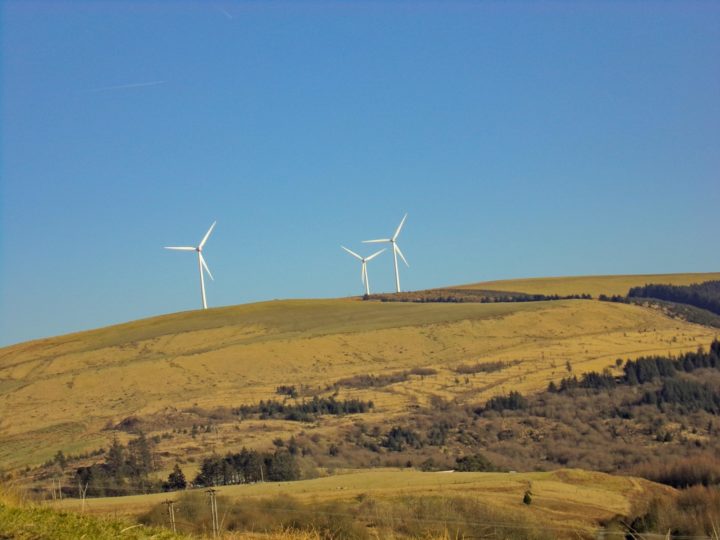Green recovery would give young people the sustainable future they crave
Young people seem to be hit disproportionally hard by coronavirus. Does a green recovery offer a brighter future for them?

By Jess Ralston
@jessralston2Share
Last updated:
Young people have had a rough few months. Premature ends to school and university terms, a summer in solitude and the chaos of exam results has only added to their woes.
Becoming increasingly apparent is that younger people are also being disproportionately affected by unemployment as a result of the coronavirus crisis. The Office for National Statistics (ONS) recent data shows that whilst over 40,000 16 – 24 year olds entered unemployment from March to June, other age groups saw slight ‘falls or very little change’.

This indicates that it is the younger generation being hit hardest by the ongoing economic shock and will be craving steady, lifelong careers in net zero industries that appeal to their greener values.
And there are concerns that come September, when the furlough scheme ends, even more will be entering the world of unemployment. ONS figures, for example, show that the furlough scheme is placing a lag on the number of young people being made redundant or not in education, employment or training (NEET).
The question is really not will it, but how bad is it going to be? And is there a way to put the younger generation at the centre of pledges to ‘build back better’?
It’s no secret that the younger generation care about the environment. Greta’s school strikes for climate went global and the UK Youth Parliament declared climate change a top concern earlier in 2020 – rightly stating that it’s young people who will be most affected by climate change. There’s further evidence that climate change counts for young people getting into work. A 2020 survey of 80 million employees showed that globally, employee comments about environmental issues increased by 52%, even more so for Generation Z (128%) and Millennials (62%).
Having grown up with climate change teachings in school and all over the news, a Department for Business Energy and Industrial Strategy survey evidenced that more than two-thirds of 18-24 year olds (around 3.7 million people) are interested in working in the green economy. The fossil fuel oil and gas sector is now struggling to recruit – a result of younger generations attuites towards oil and gas presenting ‘a significant obstacle’ - and BP’s new boss Bernard Looney recently joined Instagram to increase connection with younger talent.
The low carbon and renewable energy sector already employs around 225,000 people at the moment, and is predicted to rise to 2 million by 2030, so the youth of today may find themselves in luck as green industries boom closer to the net zero emissions target for 2050.
But where are these opportunities for young people likely to be found?
STEM jobs and apprenticeships in the electricity system, spread out to all corners of the country
Although the power sector has decarbonised much over the last decade, with emissions basically halving between 2010 and 2018, there’s still some way to go to net zero. To do this will require highly educated scientists and engineers ready to replace the baby boomer generation coming up to retirement and deliver the sizeable workforce needed.

Science, technology, engineering and maths subjects have grown in popularity at University over recent years, particularly with women - although they still only make up 15% of the energy workforce.
However research for National Grid found that the number of A level candidates for physics needs to rise by 24% and maths by 19% to maintain a pipeline of qualified workers. Added to this, the research found the number of engineering and technology annual university enrolments must grow by a third over the next 30 years, to 56,000.
Helpfully, jobs in the power sector are spread across the UK, meaning that all corners of the country could benefit from a green energy revolution. Clusters of supply chain businesses in the North East in particular would give a boost to the young people – the LGA estimate that over 25,000 jobs could be created in low carbon electricity by 2050 in the North East, a region where unemployment for young people is well above the average at 11.4% (England average is just 9.8%) encouraging the two-thirds of people who want to work in green industries to do so.
Some organisations suggest that a green recovery from coronavirus would benefit from the capacity cap on the next round of Contracts for Difference auctions (the process where organisations bid for involvement in new energy generation projects) being lifted. RenewableUK suggest that over 12,000 jobs could be made in new wind farms should this occur, in regions like the North East where there are large sites such as Dogger Bank with planning permission granted.

This bodes well for young people looking for work in the near future – as does the need for upgrades to the electricity and gas grids to support the future of low carbon heating and the energy transition. Of the 36,000 workers currently in the gas and electricity networks industry, 1,200 are young apprentices and colleagues.
With upgrades needed immediately to support the transition, this number is likely to rise with shovel-ready jobs spread around the UK but particularly in areas where youth need the skilled jobs boost and provision of a career for life. Apprenticeships have recently also been given a lift by the PM, who recently declared ‘young people, I believe, should be guaranteed an apprenticeship’ – suggesting this may be a focus for the recovery from coronavirus.
Boosting the future of sustainable transport in car manufacturing hubs like the West Midlands
With so many young people interested in doing their bit for climate change, it’s perhaps no surprise that half of young people would like to own an electric vehicle (EV), compared to just a quarter of their parents. If low carbon vehicles become first choice, as is expected by the 2035 phase out of petrol and diesels cars, the supply side of car manufacturing in the UK could face a massive uplift.
This is particularly true for regions like the West Midlands - which accounts for around 40% of the UK’s whole automotive employment and provides jobs for almost 50,000 people in the region.
Taking Wolverhampton specifically as an example, the level of skilled people at NVQ level 4 and above is about half the average – such as BTEC higher national certificates or Higher National Diplomas. EV-specific training and employing young people would provide a helping hand to heighten both the skills and employment levels in this area.
And those that currently work in the industry would not be lost either, as it’s estimated that 90% of automotive jobs could be directly transferred to EVs. This means that even more workers currently in a fossil fuel industry (petrol and diesel vehicles) could be transitioned over to a net zero industry during the introduction of EVs as the more pollutive vehicles are phased out by 2035. This might even be brought forward to 2032 under current speculation, which will make the transition to low carbon jobs accelerate even further.

Home energy retrofits – jobs for life
If an increase of almost 8% in youth unemployment nationally over the lockdown seems a lot, it’s startling that in places such as Blackpool the youth unemployment rate has almost doubled since February – to a fifth of all 18-24 year olds.
Blackpool, a red wall seat won by the Tories in December 2019, has one of the worst levels of energy efficiency in the country. Three-quarters of homes fail to meet the Governments energy performance target for 2035 indicating there’s much work to be done to bring houses up to scratch. And young people could fill up this workforce creating the net zero ready homes of the future.
The LGA estimate that by 2030, over 1,150 jobs could be made in Blackpool alone, mainly from energy efficiency and low carbon heat retrofits. A wider roll out of a works programme to improve homes in this area will therefore not only raise the standard of housing and lower energy bills, but also create employment opportunities for all age groups, with younger people perhaps choosing to go into this more environmentally friendly work.
And perhaps most crucially, a recent review of over 20 studies found that for every £1 million invested into retrofitting homes, the equivalent of 23 years of full-time employment for one person is created. This means that younger people starting off in a retrofit career, perhaps hard hit by coronavirus, have a secure job for a lifetime.
In home retrofits, net-zero jobs could be created all over country, giving young people opportunities to take pride in Britain’s march to a carbon neutral nation in all parts of country rather than just in larger cities.

Boost from industry for young people not in education, employment or training
Circling back to the North East, the region with the highest proportion of young people not in education, employment or training (NEET), the statistics currently don’t look good. In Middlesbrough, 35% of 20 to 24 year olds are NEET – some of which could be offset by the innovative CCUS program being rolled out; it’s thought it will create 5,500 during project construction and another 7,000 once built.
In other industrial clusters like Humberside and South Wales, there’s a similar story.
Hydrogen generation and carbon capture and storage in Humberside could help support this longstanding industrial cluster, which adds £18 billion to the economy each year and industry’s associated 360,000 jobs. In Humberside, the percentage of people with no qualifications is 5% above average and in Bradford and Kingston upon Hull, a third of all 16-24 year olds are NEET. This shows the areas set to gain from decarbonised industrial clusters in terms of investment, job creation and future skilled jobs for young people.
It’s often younger generations who demand change, a revolution, and a new way of life. The climate crisis remains a crucial concern for the younger generation who are likely to be swayed at the next election by a party’s green credentials – with everyone over age 14 now able to vote. This group of voters will have already suffered through a pandemic, an odd set of exam results and will be looking for a green economic recovery which also delivers on promises to level up. This is a massive opportunity for high quality, low carbon jobs to be brought to the forefront, and one that would be silly to miss.
Share